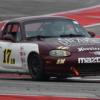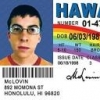OK - so I am going through my suspension and had everything completed (Caster, Camber, Toe etc...), but my Cross Weight was 48.40. Using scale stands and tightening the suspension in compression. The rake was neutral to abut 1/8 down in the rear. Bilstein shocks, I generally run about 3/4 - 5/8 gap between the shock body and bump stop.
So....doing what I thought was the right way, I turned the collars UP on the RF and LR (to increase the weight) and DOWN on the LF and RR. First 1/2 turn, then a full turn; now 3 1/2 turns later the X Weight is EXACTLY the same, but the rear is too low and the front (especially RF) is too high. I seem to be transferring weight to the rear with no impact on the X Weight
Should I have just adjusted one corner or did I use the proper procedure. Lastly I can't share before and after numbers as my car seemed to have gained 25 lbs overnight and my 2402 weight is now 2427on Longacre scales.
I suppose I will reverse all my adjustments and this time only adjust one corner at a time? My pinch welds are pretty fubar so pinch weld measurements are tough, my home track is Sebring which is bumpy. Maybe run about 4 1/2 inches to the pinch welds, is more or less better? I am a definite mid to 3/4 back of the pack.




 Sign In
Sign In Create Account
Create Account





 Back to top
Back to top Report
Report












